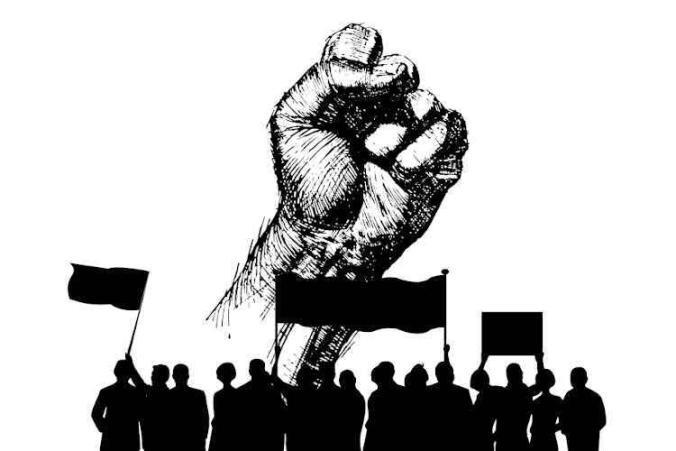After a work injury or occupational disease, workers with permanent total disability can receive an L&I pension. An L&I pension is like a lifetime annuity. Workers receive pension payments every month. Moreover, L&I pension benefits continue for the life of the worker. Sometimes, work injury claimants ask what happens after they die. Does L&I provide survivor benefits? Are there L&I death benefits? Will their family members receive an L&I survivor pension? Or, can workers pass their L&I pension to their spouse or children? In general, the answer is Yes. However, every situation is different. It always depends on the facts and details.
L&I survivor benefits when death is not related to the L&I claim
Say that the Department of Labor and Industries (L&I) gives you an L&I pension. Additionally, at the time you receive the pension, say that you have a spouse or domestic partner. Then, L&I will provide you with survivor benefits options. In fact, L&I sends you a form so you can choose the L&I survivor benefits you want. The form explains all the different options. It also details the financial implications of each option.
You, the injured worker, can select your L&I survivor benefits. The most common options are:
(1) Full survivor benefits
(2) Partial survivor benefit
(3) No survivor benefits.
In other words, the pensioner can choose to have all, or a portion of their pension benefits pass on to their surviving spouse. These options apply when the pensioner dies from causes unrelated to their L&I claim. Furthermore, when death that is not related to the claim, you can only pass survivor benefits to your spouse (or partner). You cannot pass them to your children or dependents.
Option 1: Full L&I pension survivor benefits
Let’s say you choose full L&I survivor benefits. Furthermore, before death, you receive a certain pension amount every month. The surviving spouse or domestic partner continues to receive the same amount after you die. This option is good for the surviving spouse. However, this option usually results in the lowest monthly payout amount. That’s because L&I stretches your pension payments over the remaining life of both you and your spouse.
Option 3: Partial L&I survivor benefits
Now let’s assume the injured worker chooses partial survivor benefits. As before, the pensioner receives a certain monthly payout during their lifetime. Upon death, the surviving spouse or domestic partner continues to receive approximately 50% of the pension. Here, again, the payments continue for the rest of the spouse’s life.
Option 2: No claim survivor benefits
Work injury claimants can decline L&I survivor benefits. In this case, the spouse must sign and notarize an L&I option form. The form acknowledges that they understand and agree to not receive benefits after the pensioner’s death. Importantly, this option typically results in highest monthly payout. That’s because L&I only pays the pension funds over the life of the pensioner.
Survivor benefits when death is claim-related
Sometimes, a work injury or occupational disease is the cause of death. We refer to these cases as fatal claims. Fatal claims can occur when a worker dies while on the job. However, they can also happen later. For example, when an L&I pensioner dies from claim-related conditions.
Legally speaking, L&I survivor pension benefits for work injury cases that result in death are usually straightforward. While tragic, in most such cases, the work injury is the cause of death. With fatal injuries on the job, employers must report them to L&I. Alternatively, they can report them to the Department of Occupational Safety and Health (DOSH) within 8 hours. DOSH will prepare a fatality memo. Also, under RCW 68.50.103, if the cause of death is uncertain, then they must order an autopsy.
If a worker receives L&I pension payments and dies later, then L&I survivor benefits can be more challenging. That’s because you must show causation. In other words, there must be medical evidence connecting the cause of death to the work injury or occupational disease. Typically, you’ll have to hire a medical expert. Sometimes, it’s even necessary to get an opinion from a forensic pathologist. This entire process can be sad and frustrating for survivors.
How to apply for L&I survivor benefits
Surviving beneficiaries who want to collect L&I survivor benefits must submit a beneficiary application. For work injury, they must submit the L&I survivor benefits application within one year from the date of the death. The rules for occupational disease deaths are different. For those, you must submit within two years of receiving notice from a physician that death was due to an occupational disease.
When applying, you’ll have to provide additional documents. These documents include:
1) Marriage certificate or declaration of domestic partnership
2) A copy of the death certificate
3) Birth certificate for dependent children
4) Letters of guardianship or custody orders (when applicable)
5) For children 18-22 years old – Proof of full-time enrollment in an accredited school.
What happens after L&I approves survivor benefits?
After L&I approves survivor benefits, L&I makes a one-time payment upon death. The amount of this immediate payment is 100% of the average monthly wage in Washington State. On top, L&I provides burial benefits up to %200 of the same average monthly wage. After that, L&I pays monthly survivor benefits when due. The amount of the monthly payments varies. In fact, it depends on who receives the L&I survivor benefits. The payout amounts are different for spouses, children, or other dependents.
L&I survivor benefits payments to a spouse, domestic partner, or children
The first category of payments is when the survivor is a spouse or a domestic partner. Here, the L&I claim entitles the survivor to receive 60% of the worker’s wages. Furthermore, for reference, L&I calculates the worker’s wages at the time of injury. On top, there’s a statutory maximum limit. If 60% of the wages is greater than the statutory maximum, then payments are capped at the limit.
Sometimes, worker’s that die in fatal claims leave behind children. With surviving children, L&I pays an additional 2% of wages per child. This extra benefit also has a maximum limit. Here, the limit is up to 10% of wages. That’s equivalent to paying survivor benefits for up to 5 children.
Survivor benefits and L&I survivor pension for other dependents
On occasion, there is no eligible spouse or domestic partner. Yet, there are surviving minor dependents. In these unfortunate situations, L&I pays monthly survivor benefits of 35% of wages. As before, L&I calculates the wage rate at the time of the work injury. Also, it’s important to note that L&I makes the payments to the guardian of the minor dependents. Plus, the fatal L&I claim pays an additional 15% for every additional child. Once again, this is up to a maximum limit. In this case, the limit is set at 65% of the injured worker’s wages. Finally, if there’s more than one child, then L&I divides claim benefits equally among them.
Moreover, an L&I claim resulting in the worker’s death pays out benefits to other recipients. However, these recipients only qualify if they depended on the worker’s earnings. For instance, dependents such as parents, grandparents, or grandchildren. These dependents can also be brothers, sisters, nieces, and nephews. Here, dependents may receive a benefit equal to 50% of the average monthly support during the year before the injury. This L&I benefit limit caps out at 65% of the worker’s wage. Or, at the maximum benefit level. Whichever is less.
When will my L&I survivor benefits end?
For dependents, L&I payments for survivor benefit may end. More explicitly, L&I stops payments when the dependency naturally ends, had the injury not occurred. Also, for minor dependents, their L&I survivor benefits end when they turn 18. If they are full-time students in an accredited school, then it’s when they turn 23.
For spouses, or domestic partners, the L&I survivor pension benefit is an annuity for life. However, L&I terminates benefits when the surviving spouse remarries. Similarly, L&I stops payments when the domestic partner enters another partnership. When this happens, the surviving spouse or partner has 2 options.
Option #1 – they can choose to receive a lump-sum settlement payment. Either 24 times the monthly compensation, or 50% of the remaining value of the pension. Whichever is less. Or, option #2 – they can decline the settlement. With option #2, the spouse maintains their right to reinstate L&I survivor pension benefits when the new relationship ends. For example, when the new marriage ends because of death or divorce. Or, when the new domestic partnership is over.
Conclusions
In summary, spouses, domestic partners and dependents may receive L&I survivor benefits. These benefits start upon the death of the work injury claimant who’s eligible for an L&I pension. L&I survivor benefits vary depending on the cause of death. Some benefits are appropriate when the death relates to the workers’ compensation claim. Other benefits apply regardless. Furthermore, the extent of the L&I survivor benefits varies depending on the status of surviving dependents.
It’s important to remember that survivors must file an application for benefits. It’s critical to file the application on time. One year for death after a work injury, and 2 years for occupational disease deaths. Unfortunately, if you don’t file on time, you’re giving up all your rights for benefits.


